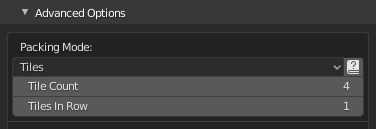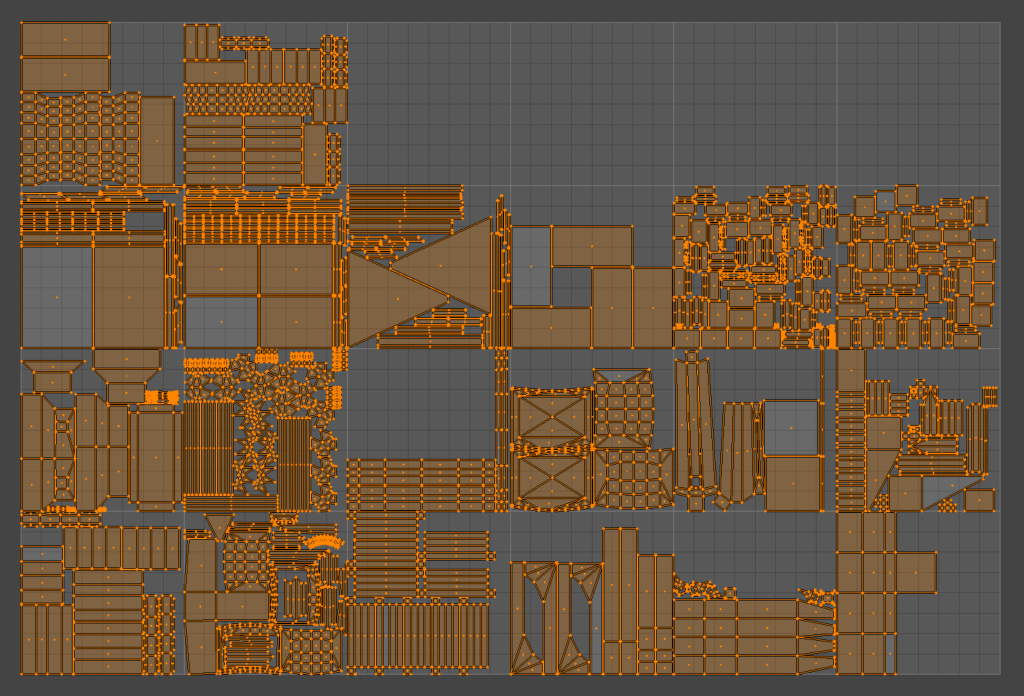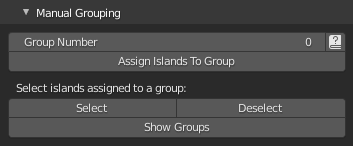UVPackmaster supports packing to UDIM tiles in the following packing modes:
Packing mode Tiles

In this mode packer will pack selected islands into the number of consecutive UDIM tiles specified by the user using the Tile Count parameter. Behavior of this mode varies greatly depending on whether the Fixed Scale option is enabled.
Fixed Scale on
If Fixed Scale is on, the packer will not scale islands during packing. If there is no room to pack an island in the current tile, it will be packed into the next tile. Packer will return an error if the islands can’t fit into the specified number of tiles. Packing will also fail if the UV map contains an island larger than a single tile.

Fixed Scale off
If Fixed Scale is off, the packer will scale the selected islands, so that they fit into the specified number of tiles, minimizing the unused area. Keep in mind that the applied scale will be the same for every island, so proportions between islands don’t change after packing.

If the Tile Count parameter is set to 0, then the number of tiles used during packing is not limited to a specific number.
Tiles filling limitations
A UV map can be usually packed such that it properly fills up almost every number of tiles. There are rare cases though, when a given UV map cannot be fitted into a specific number of tiles with great accuracy, even with scaling enabled. This might be the case, for example, when the UV map contains one island which is much bigger than other islands. In such a scenario, the maximum scale, which can be applied to the islands is limited by the size of the biggest island (the island must fit into a single tile). The same limit will also apply to the smaller islands (because scaling is always uniform across the UV map). As a result, the smaller islands might not cover the requested number of tiles. In this situation the packer will scale the islands up during packing, so that they cover as much area as possible, but a large part of unused area in the tiles will still remain. In order to mitigate this issue, the user should adjust the UV map so that the proportions between islands are more uniform.
Packing mode Groups To Tiles

In this mode the UV islands are split into many groups using a grouping method chosen by the user. Every group will be packed separately into its own tile.
Grouping methods available:
- material
- object
- mesh part
- similarity
- manual
Keep in mind that the packer will apply different scaling to every group during packing, so that islands belonging to a given group fit into a given tile. It means that while the proportions between islands belonging to the same group will be the same after packing, the proportions between islands belonging to different groups will change.

Manual grouping
When selecting the grouping method, the user specifies the way the islands will be split into groups, but in most methods, they cannot control the order of the groups, i.e. which group comes as first, which group as second, etc. In the case of the Groups To Tiles packing mode, it means that the user cannot specify which group will be packed into which tile.
To solve this issue, a special Manual grouping method was introduced. With this method the user can assign a group number to every island. He can do it in the Manual Grouping panel. Islands sharing the same group number will be processed by the packer as belonging to the same group. An advantage of manual method comes from the fact that group numbers also determine the order of the groups. It means that a group specified by number 0 will always be the first group, and it will always be packed into the first tile when using the Groups To Tiles packing mode. The group number 1 will always be packed into the second tile, etc.

The user can assign numbers arbitrarily, according to their needs. In particular, they may skip some numbers, for example by defining the group number 0 and group number 2, but omitting the group number 1. In such a case, the second tile will be left empty during packing and only the first and third tile will be used.
WARNING: keep in mind that the greater the group number, the farther from the UV origin its tile will be located when using Groups To Tiles packing mode.

